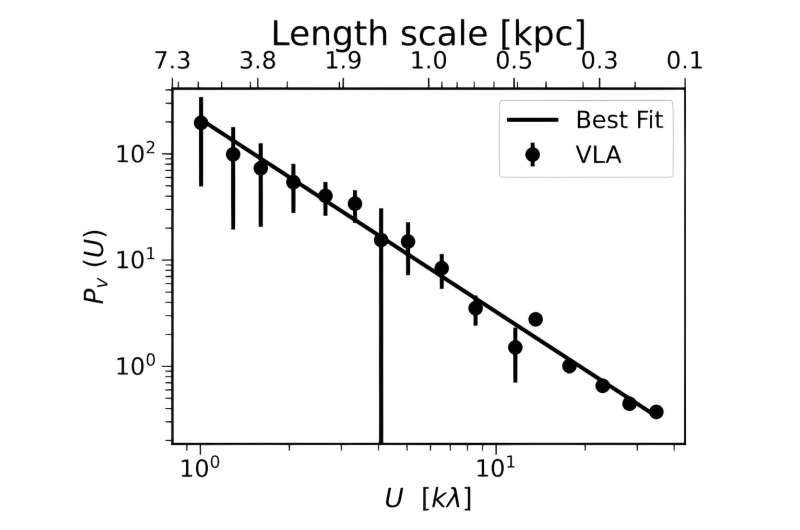October 11, 2023 report
This article has been reviewed according to Science X's editorial process and policies. Editors have highlighted the following attributes while ensuring the content's credibility:
fact-checked
preprint
trusted source
proofread
Study inspects large-scale turbulence in the galaxy NGC 6946

Indian astronomers have conducted a study aimed at investigating a large-scale turbulence in the interstellar medium of a spiral galaxy known as NGC 6946. Results of the study, published October 4 on the pre-print server arXiv, could help us better understand the nature of this phenomenon.
Observations show that the interstellar medium (ISM) is turbulent on scales up to thousands of light years. This turbulence plays an important role in several processes such as the formation of stars, the stability of molecular clouds, and the re-acceleration and diffusion of cosmic rays. However, although many studies of turbulence in ISM have been conducted, its generation mechanism still baffles scientists.
NGC 6946 is a bright late-type spiral galaxy located some 19.2 million light years away. It has an optical radius of around 32,000 light years, dynamical mass of about 730 billion solar masses and a star-formation rate at a level of 2.5 solar masses per year. Previous observations of NGC 6946 have identified the presence of a turbulence cascade in the disk of this galaxy.
Now, Meera Nandakumar and Prasun Dutta of the Indian Institute of Technology (BHU) Varanasi, decided to take a closer look at the turbulence in NGC 6946, by analyzing the data from the Karl G. Jansky Very Large Array (VLA) and The HI Nearby Galaxy Survey (THINGS). They used the visibility moment estimator (VME) to measure the neutral atomic hydrogen (HI) column density and line of sight turbulent velocity power spectrum from VLA and THINGS.
The results point to the existence of a large-scale energy cascade in the disk of NGC 6946. The study found that the density power spectrum of this galaxy has a slope of -1.81 and the column density slope was measured to be -0.96. According to the authors of the paper, these findings suggest that the turbulence-driving mechanism for NGC 6946 comes from a combination of compressive and solenoidal forcing.
"The values of the power law indices indicate a combination of solenoidal and compressive force responsible for driving the measured turbulence," the astronomers explained.
Moreover, it was noted that NGC 6946 hosts inter-arm magnetic fields, known as magnetic arms with field strength of about 20 µG. Therefore, the researchers suppose that the magnetic field of NGC 6946 may have a major role to drive the large-scale turbulence and these magnetic structures are the result of turbulent dynamics in the disk.
The authors of the study further explained that the presence of strong regular magnetic fields from the magnetic spiral arms in NGC 6946 is likely contributing to the solenoidal part. They added that self-gravity or gravitational instability can mostly be the input for the compressive part of the forcing in the driving mechanism.
Meera Nandakumar and Prasun Dutta plan more studies on the nature of turbulence in ISM. They noted that measurements of the turbulence cascade on a large number of galaxies and interpreting obtained results with various numerical simulations is required in order to advance our understanding of this phenomenon.
More information: Meera Nandakumar et al, Large-scale turbulence cascade in the spiral galaxy NGC~6946, arXiv (2023). DOI: 10.48550/arxiv.2310.02661
Journal information: arXiv
© 2023 Science X Network





















